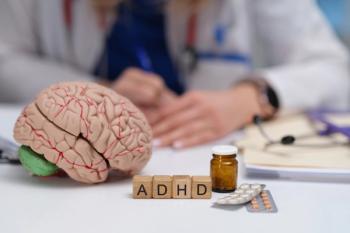
Temper Tantrums: Cause for Concern-or Normal Behavior?
Parents often come to the pediatrician with concernsabout their preschooler's temper tantrums.Should we reassure them that tantrums arenormal, or should we refer the child for furtherevaluation? What clues suggest that tantrumsmight be a sign of future problems?
Parents often come to the pediatrician with concernsabout their preschooler's temper tantrums.Should we reassure them that tantrums arenormal, or should we refer the child for furtherevaluation? What clues suggest that tantrumsmight be a sign of future problems?
Belden and colleagues1 set out to address thesequestions in a study recently published in The Journalof Pediatrics. The authors recruited children aged 3 to5.11 years from physicians' offices, preschools, andday-care centers in the St Louis area for a study on preschooldepression. Data were analyzed from 279 subjects,including healthy children as well as those identifiedby a validated screening tool to have signs of depression,disruptive disorder, or both. Children with delaysin language or cognition, pervasive developmentaldisorder, chronic medical problems, and neurologicaldisorders were excluded.
Subjects were divided into a healthy group, a depressivegroup, a disruptive group, and a depressive-disruptivegroup. Diagnostic and Statistical Manual ofMental Disorders, Fourth Edition (DSM-IV) criteriawere used to group the children based on symptoms reportedby parents. The healthy children did not meetthe criteria for any psychiatric disorder. The depressivegroup was made up of children who met the criteria formajor depressive disorder without a comorbid disruptivediagnosis. The disruptive group included childrenwho met criteria for attention-deficit hyperactivity disorder,conduct disorder, or oppositional defiant disorderwithout a comorbid depressive diagnosis. The depressive-disruptive group met criteria for both major depressivedisorder and a disruptive disorder.
Using the Preschool Age Psychiatric Assessmenttool, the authors obtained information from primarycaregivers about temper tantrum characteristics suchas frequency, intensity, and specific behavioral components.This information was not used to determinewhether the child met DSM-IV criteria for a depressiveor disruptive disorder. Tantrums were then classifiedinto 3 groups based on the caregivers' responses: normative,excessive without aggression, and excessivewith aggression.
Children who did not meet DSM-IV criteria forpsychiatric disorders had fewer destructive, violent, self-injurious,and orally aggressive behaviors during theirtantrums than did children who met depressive and/ordisruptive criteria. The healthy children also had shorterand less intense tantrums with quicker recoverytimes. The depressive children were more likely to participatein self-injurious behavior, and the disruptivechildren more likely to engage in aggressive behavior.Belden and colleagues1 determined that those at risk fora problem included children who:
- Were unable to calm themselves after a tantrum.
- Had frequent tantrums.
- Exhibited any self-injurious behavior.
- Showed consistent aggression (toward people or objects).
- Had tantrums that lasted last more than 25 minutes.
The authors note that their study is limited by thecaregiver report as the single source of data for boththe tantrum characteristics and the DSM-IV criteria.The conclusions could be strengthened if in a futurestudy, data on each child's behavior were compiled fromseveral different sources or by an objective observer. Inthe meantime, however, the Belden study can helpguide pediatricians when counseling parents on signs ofconcerning tantrums.
The bottom line: if we see children with tantrumsthat are frequent, aggressive, self-injurious, prolonged, ornot self-limited, we need to consider referring for furtherevaluation rather than only reassuring parents.
References:
- Belden AC, Thomas NR, Luby JL. Temper tantrums in healthy versus depressed and disruptive preschoolers: defining tantrum behaviors associated with clinical problems. J Pediatr. 2008;152:117-122.
Newsletter
Access practical, evidence-based guidance to support better care for our youngest patients. Join our email list for the latest clinical updates.








